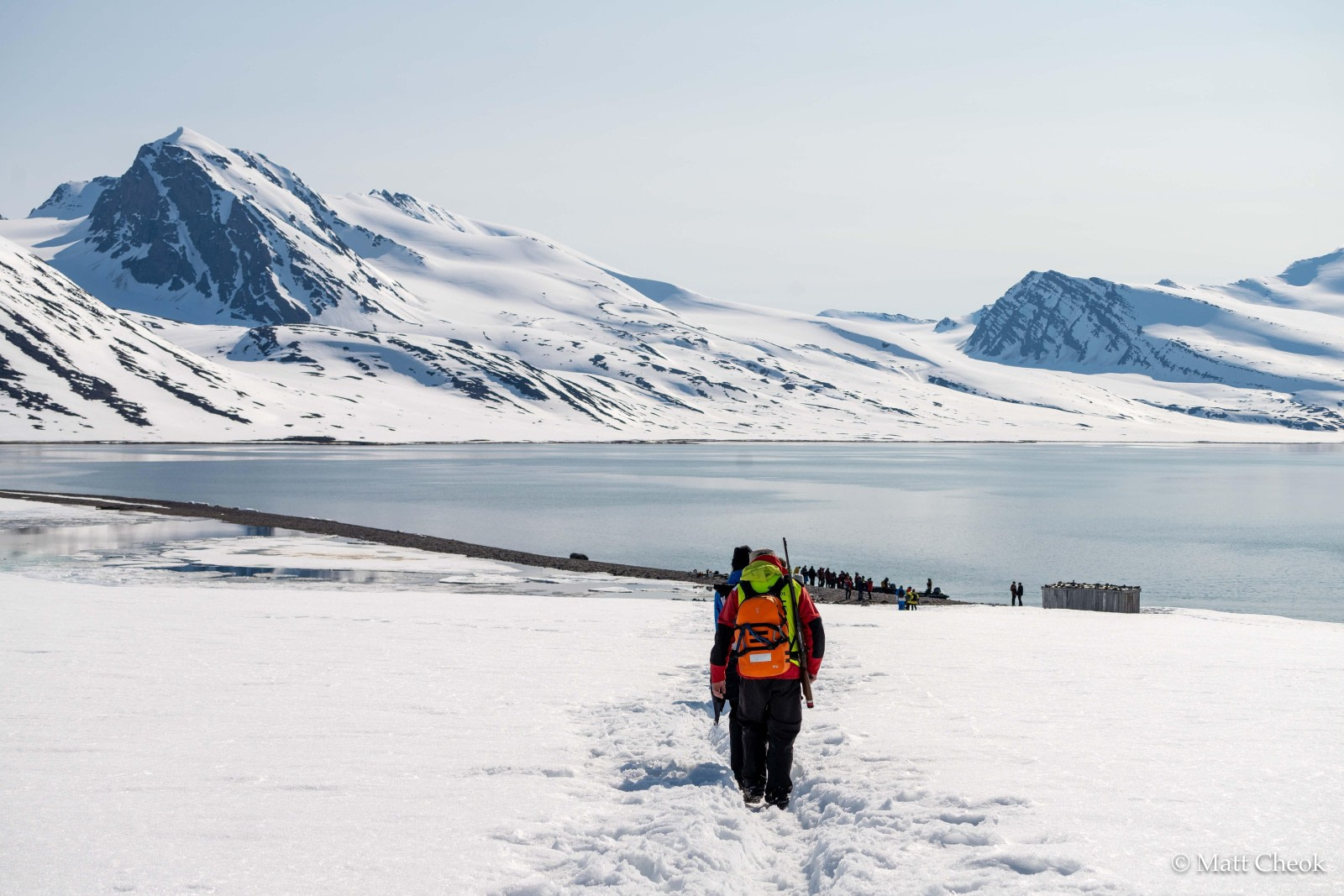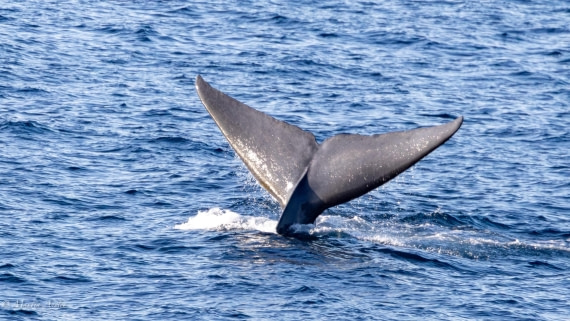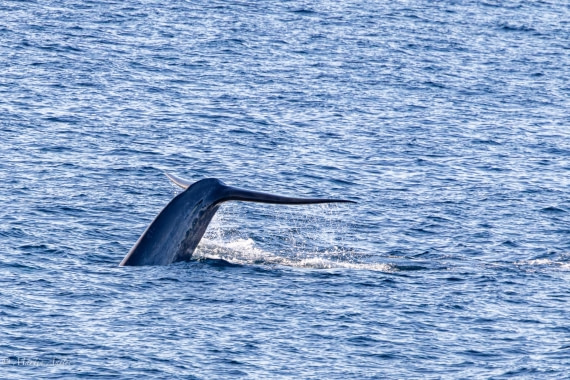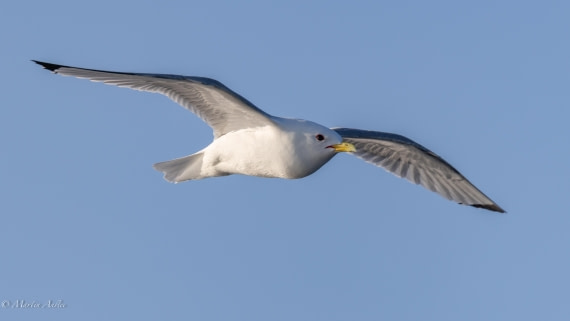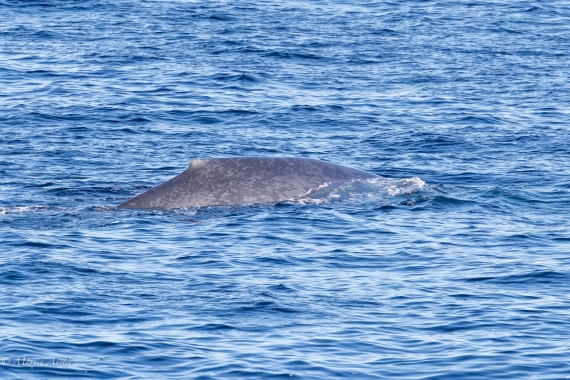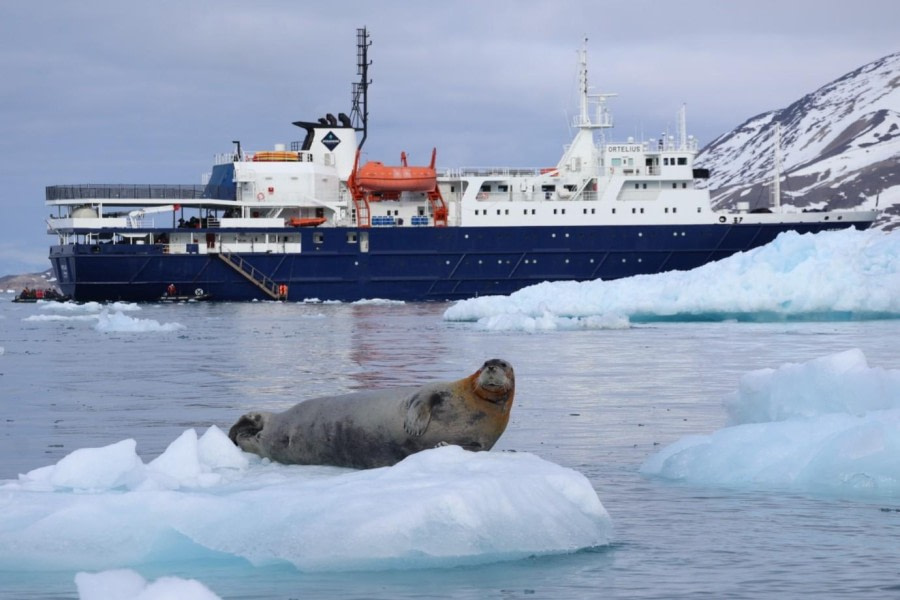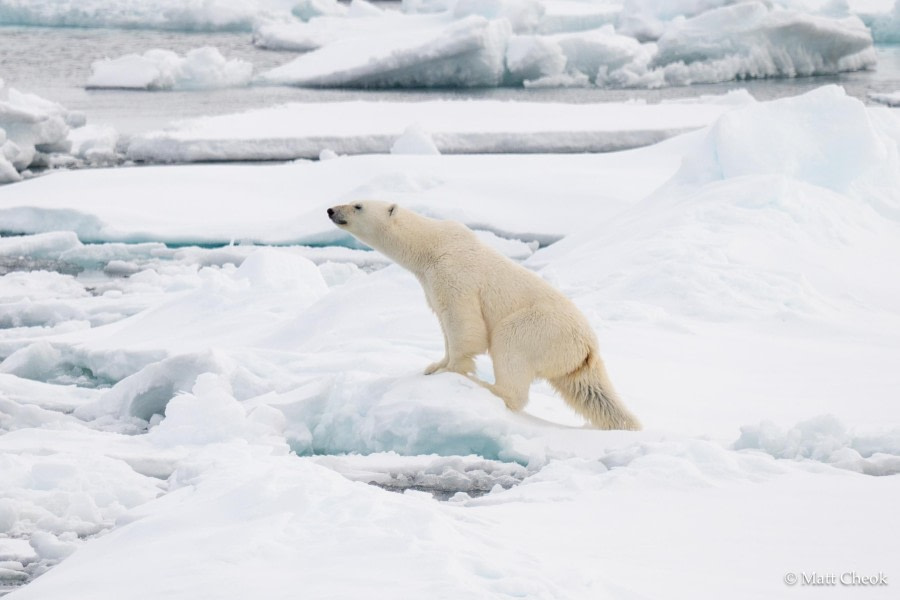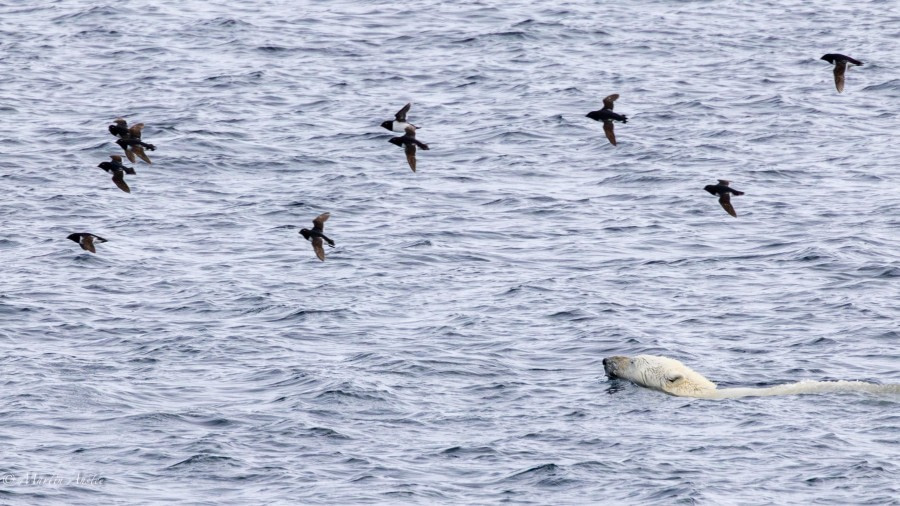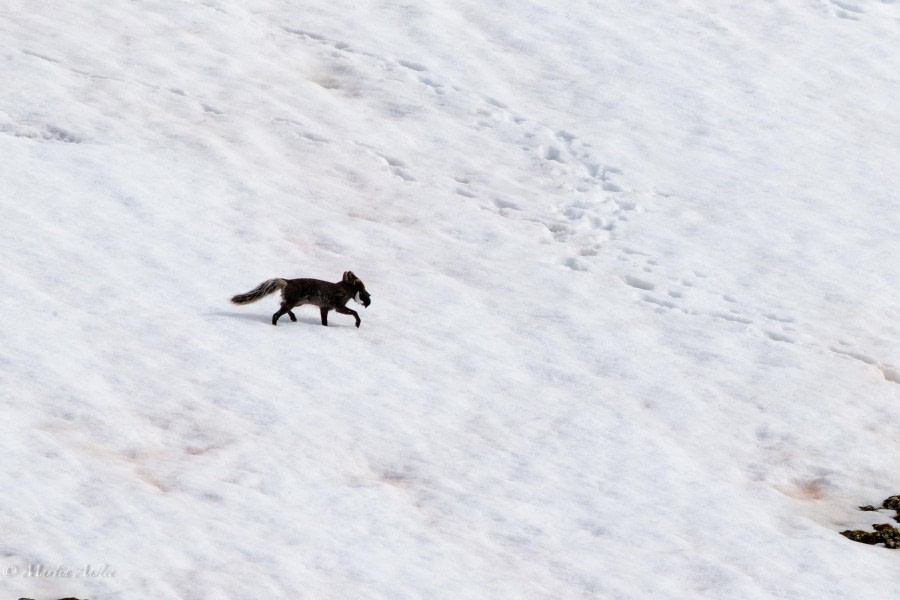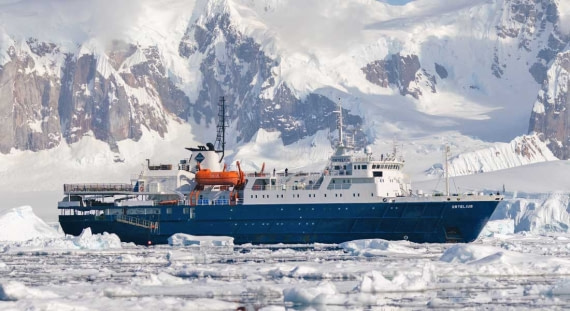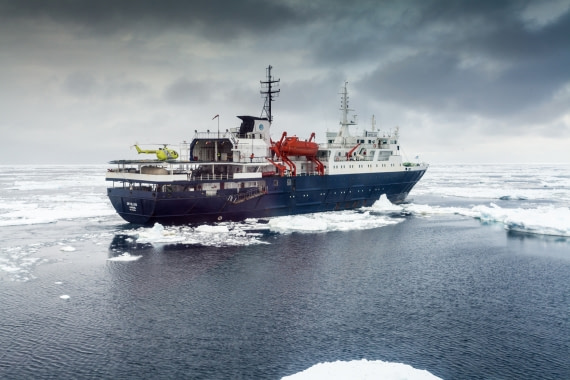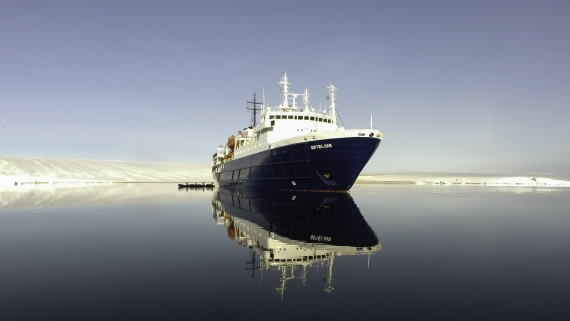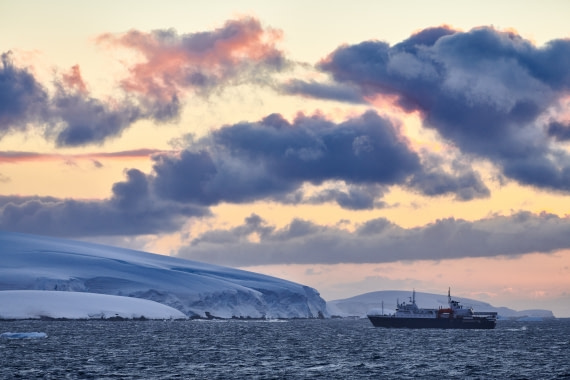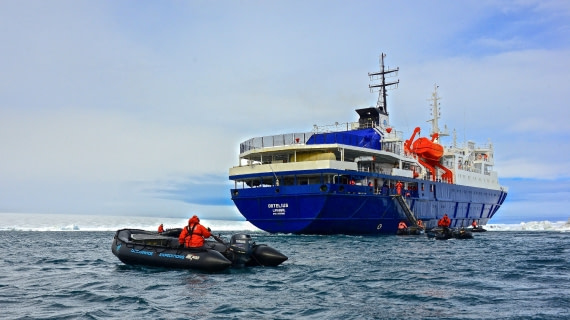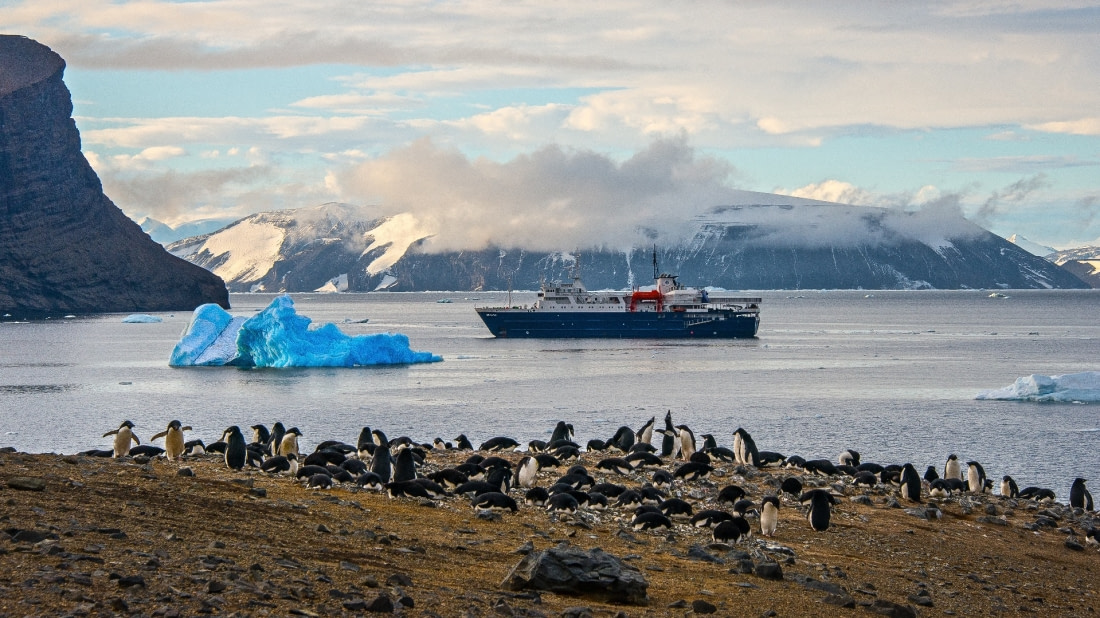| Date: | 19.06.2025 |
| Position: | 78° 14.0’ N / 014° 51.1’ E |
| Wind: | W-3 |
| Weather: | Clear |
| Air Temperature: | +5 |
Our Arctic adventure aboard Ortelius was about to start. Throughout the entire day the sun had shone in Longyearbyen, a perfect setting for our departure. At 4pm we all gathered at Kulkaya, the coal pier of the northernmost city in the world. A reminder of the old past of this remote archipelago tucked in the northwestern corner of the Barents Sea.
One by one, we made our way up the gangway, greeted by bright sunshine and the crisp, invigorating Arctic air. Excitement carried us through our first half hour onboard as we explored the ship—occasionally losing our way in its winding corridors. Soon after, we were warmly welcomed by Claudio, our Expedition Leader, and William, the Hotel Manager. As everyone settled into their cabins, Captain Per was introduced and offered his signature toast to each guest, setting a wonderfully warm and inviting tone for the journey ahead.
Once everyone was on board, we assembled for the mandatory safety drill. Donning our lifejackets, we gathered at the muster station before making our way up to the top deck. As the Ortelius slowly pulled away from the harbour, northern fulmars joined us, effortlessly gliding alongside the ship—their reflections shimmering on the glassy surface of the water. The moment of departure had truly arrived, and a shared sense of excitement buzzed in the crisp Arctic air. The sense of departure was real now, and excitement filled the air.
Our first dinner together set the tone for the voyage ahead; plentiful, delicious, and filled with laughter. The dining room buzzed with conversation as we helped ourselves to a generous buffet, featuring impressively large steaks that quickly became the subject of friendly jokes about the weight we might gain by the end of the trip.
Afterward, we gathered in the lecture room for the much-anticipated boot party, where we were fitted with our rubber boots, these would become our best friends during the following days when stepping out of the ship.
Just as we were settling into the rhythm of ship life, excitement surged once more, a blue whale and perhaps more than one individual, had been spotted off the bow. We rushed outside, hearts racing, to witness the enormous creature surface gracefully in the distance, a breathtaking welcome to the wild wonders that awaited us.
The blue whale, an awe-inspiring giant and the largest mammal ever to have lived on Earth, is a true marvel of the natural world. Reaching lengths of up to 30 meters and weighing as much as 180 tons, its sheer size is almost beyond comprehension. Despite its enormity, it moved with surprising grace, gliding through the ocean with slow, powerful strokes. Seeing one in the wild is a humbling reminder of the planet’s vastness and the extraordinary creatures that call it home.
